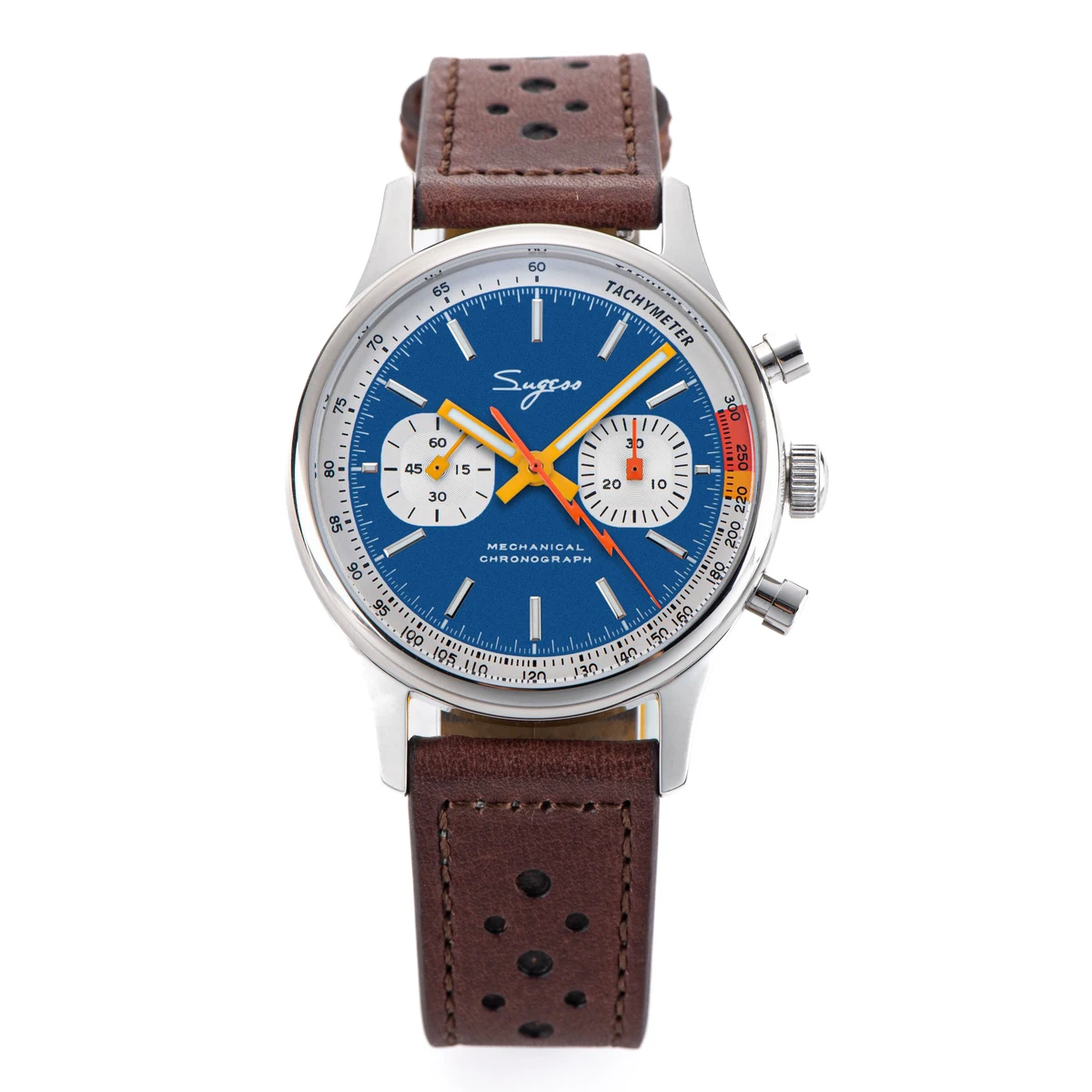The Soul of Mechanical Chronography
Craftsmanship in chronograph movements represents the perfect marriage of scientific precision and artistic expression. At its core, it encompasses the meticulous design, production, assembly, and finishing of a mechanical system that can measure elapsed time with remarkable accuracy. Unlike simple timekeeping mechanisms, chronographs incorporate additional layers of complexity that demand extraordinary skill to execute properly.
These intricate timekeeping instruments stand as the pinnacle of horological achievement for good reason. A well-crafted chronograph movement contains hundreds of components—some no larger than a grain of sand—working in perfect harmony. Each part must be manufactured to tolerances measured in microns (thousandths of a millimeter), often finished by hand, and assembled with surgical precision.
What makes chronograph craftsmanship truly exceptional is its dual nature. On one hand, it represents engineering excellence—the movement must operate flawlessly, starting, stopping, and resetting precisely. On the other hand, it embodies artistic expression through decorative techniques that transform functional metal components into miniature works of art.
The tradition of chronograph pilot watches showcases this marriage of form and function perfectly, as these timepieces must perform reliably in demanding conditions while representing the pinnacle of watchmaking art.
Despite technological advances that have revolutionized manufacturing, the most respected chronographs still incorporate significant handcraftsmanship. This human touch ensures that each movement has its own subtle character while maintaining the longevity that automatic watches are known for—often functioning flawlessly for generations when properly maintained.
The Evolution of Chronograph Movement Craftsmanship
The journey of chronograph craftsmanship spans over two centuries of horological development. The earliest chronographs were pocket instruments, designed primarily for scientific and military applications rather than everyday timekeeping. These rudimentary devices relied on a drop of ink to mark elapsed time—hence the name “chronograph,” meaning “time writer.”
The true foundation of modern chronograph craftsmanship began with the development of mechanisms that could start, stop, and reset without interfering with the timekeeping function. This represented an enormous technical challenge, as it required creating a system that could engage and disengage from the main timekeeping gear train smoothly and precisely.
The monopusher chronograph marked an important milestone, allowing users to control all chronograph functions through a single button. Later, the innovation of the dual-pusher system—which separated the start/stop function from the reset function—created the template for chronograph design that persists to this day. This development mirrors other advancements in the timeline of diving watch innovations, showcasing how watchmaking progress often occurs through incremental improvements to fundamental designs.
A watershed moment came with the transition from pocket to wrist chronographs. This miniaturization required complete redesigns, as movements had to become smaller while maintaining accuracy and durability. Watchmakers developed innovative solutions like column wheels and vertical clutches—components that remain hallmarks of fine chronograph craftsmanship today.
The mid-century period saw chronograph craftsmanship reach new heights with the development of iconic calibers that combined technical excellence with artistic finishing. However, the quartz crisis of the 1970s threatened to eradicate the craft entirely as electronic watches briefly overshadowed mechanical timepieces.
The subsequent renaissance of mechanical watchmaking brought renewed appreciation for chronograph craftsmanship. Modern manufacturers began blending traditional techniques with advanced materials and manufacturing methods, creating a new golden age of chronograph design that parallels advances seen in the evolution of dive watch technology. Today’s finest chronographs honor historical traditions while incorporating subtle innovations that improve reliability, accuracy, and usability.
Architectural Design: The Foundation of Excellence
The architectural design of a chronograph movement forms the foundation upon which all other aspects of craftsmanship are built. Before a single component is manufactured, master watchmakers must conceptualize a coherent system that balances technical performance, aesthetic appeal, and manufacturability.
Two fundamental approaches dominate chronograph architecture: integrated and modular designs. Integrated chronograph movements are designed as complete units from the ground up, with the chronograph mechanism fully incorporated into the base movement. This approach typically yields more elegant technical solutions and thinner profiles, but requires significantly more development resources.
Modular chronographs, conversely, add chronograph mechanisms to existing base movements. While often considered less prestigious, modern modular designs can achieve remarkable performance and allow for more cost-effective production without compromising quality.
The spatial arrangement of components within the movement represents another critical design consideration. Master chronograph architects must determine optimal gear train layouts, lever geometries, and component positioning to ensure smooth operation while facilitating both assembly and adjustment. This spatial puzzle becomes particularly challenging when designing ultra-thin chronographs or those with additional complications.
Different manufacturers approach this challenge with distinct design philosophies that reflect their horological traditions:
- Some prioritize traditional architecture with column wheels and lateral clutches
- Others embrace modern solutions like vertical clutches and ceramic components
- Many blend classical and contemporary elements for optimal performance
The design decisions made at this stage profoundly influence both technical performance and finishing possibilities. A well-conceived chronograph layout provides adequate space for hand-finishing while ensuring robust operation—bridging engineering and artistry in a way that defines the character of the finished timepiece.
Our collection of automatic chronograph watches showcases various architectural approaches, from traditionally-inspired designs to modern interpretations that push the boundaries of chronograph craftsmanship.
Critical Components: The Heart of Chronograph Functionality
Column Wheel vs. Cam Actuation Systems
At the heart of every chronograph lies its control system—the mechanism that translates pusher pressure into precise mechanical action. Two primary systems dominate this domain: the column wheel and the cam-actuated mechanism.
The column wheel represents traditional chronograph craftsmanship at its finest. Resembling a castle turret, this precisely machined component features teeth (columns) arranged in a circular pattern. Manufacturing a column wheel demands extraordinary precision—the columns must be perfectly uniform in height and spacing, with tolerances measured in hundredths of a millimeter. The finest examples are hand-finished with polished teeth and beveled edges that catch light beautifully.
Cam-actuated systems offer a more modern approach, using heart-shaped cams and levers to control chronograph functions. While often considered less prestigious, well-executed cam systems can provide excellent performance and durability, sometimes with smoother operation than column wheels. The craftsmanship challenge lies in creating precisely shaped cams and perfectly balanced levers that interact without friction or play.
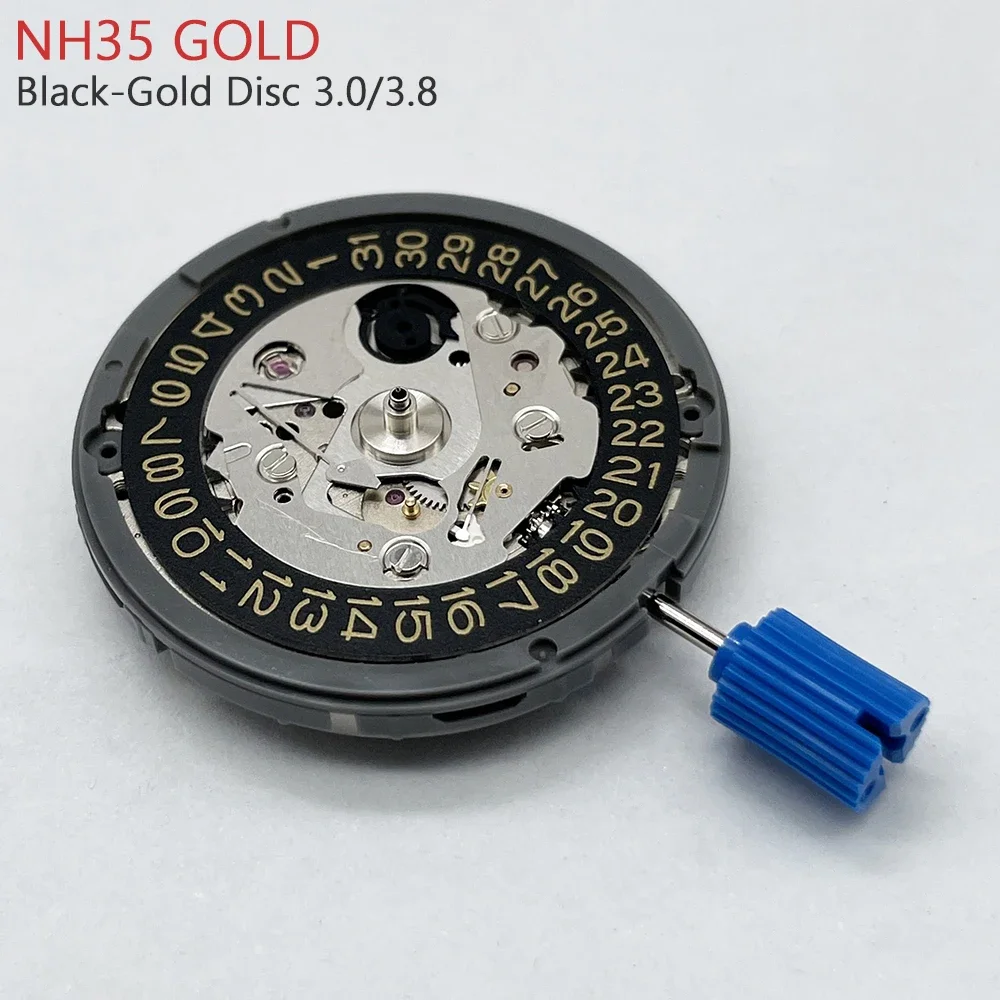
Clutch Mechanisms and Their Fabrication
The clutch mechanism represents another critical component where craftsmanship directly impacts chronograph performance. This system connects and disconnects the chronograph mechanism from the timekeeping train.
Horizontal (lateral) clutches use a small gear that slides sideways to engage the chronograph wheel. While simpler to manufacture, they require precise alignment and can cause the chronograph seconds hand to jump slightly when engaged.
Vertical clutches operate more like a car’s clutch, with friction plates that press together. This design eliminates the jumping seconds hand issue but demands extraordinary manufacturing precision. The friction surfaces must be perfectly flat and smooth, often requiring specialized polishing techniques that blend modern technology with traditional hand-finishing.
Hybrid clutch systems combine elements of both approaches, seeking the best balance between manufacturing complexity and performance. These innovative designs showcase how automatic watches continue to evolve through creative problem-solving.
Balance Systems and Chronograph Performance
The balance assembly—comprising the balance wheel, hairspring, and regulating system—plays a crucial role in chronograph performance. Chronographs face unique challenges because engaging the timing mechanism creates additional load on the movement, potentially disrupting timekeeping accuracy.
Master watchmakers address this challenge through careful selection of balance wheel mass and hairspring characteristics. Some high-end chronographs feature specialized balance designs with variable inertia and free-sprung regulation that maintain consistent amplitude regardless of whether the chronograph is running.
Many of these technical solutions appear in both chronograph and non-chronograph watches, including manual wind watches, though the implementation must be specially adapted to handle the unique demands of chronograph operation.
The Art of Hand-Finishing: Traditional Techniques
Anglage (Beveling)
Perhaps no technique better symbolizes fine watchmaking craftsmanship than anglage—the creation of perfectly polished 45-degree beveled edges on movement components. True hand-executed anglage begins with filing to establish the bevel, followed by progressive polishing with wooden tools and diamond paste until the surface achieves a mirror finish.
What distinguishes exceptional anglage is its consistency and precision. Master finishers maintain perfect 45-degree angles even around complex shapes, with bevels of uniform width throughout. The ultimate test of skill comes in executing interior angles—sharp inward corners that machines simply cannot reach. These interior angles serve as a definitive signature of hand craftsmanship, as they can only be created through painstaking manual work using small wooden or bone tools.
Côtes de Genève and Linear Decorations
Côtes de Genève (Geneva stripes) are among the most recognizable finishing techniques in fine watchmaking. These parallel decorative lines create a wave-like pattern that catches light beautifully across movement bridges and plates.
Traditional application involves drawing a specialized tool across the component surface while applying consistent pressure. Each stripe requires a separate pass, with the spacing between stripes precisely controlled. The result is not merely decorative—the microscopic texture helps trap dust particles, preventing them from entering the movement mechanism.
Regional variations include the slightly wider Côtes de Genève found in Swiss traditions and the finer, more closely spaced lines preferred by German manufacturers. Each tradition represents a distinct interpretation of this fundamental finishing technique.
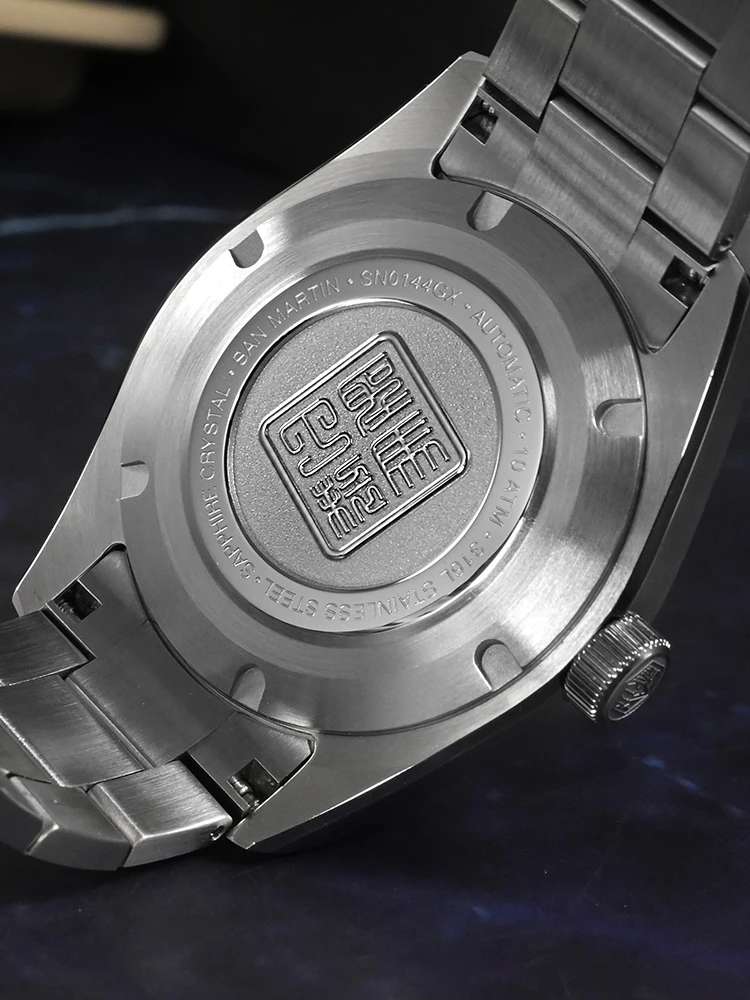
Circular Graining and Perlage
Circular graining (perlage) creates overlapping circular patterns that resemble fish scales or tiny pearls across movement surfaces. This technique requires extraordinary consistency in both pressure and positioning to achieve uniform results.
The finisher applies a rotating polishing tool to the component surface, creating each individual “pearl” through a precise rotary motion. Each subsequent circle must overlap the previous one with mathematical precision to create the characteristic pattern. Beyond its aesthetic appeal, perlage serves practical purposes—the textured surface retains lubricating oils and prevents reflection that could interfere with watchmakers during assembly or service.
The history of professional diving watches reveals similar attention to functional finishing, where technical needs drive aesthetic choices that ultimately become defining characteristics.
Black Polishing (Poli Noir)
Black polishing represents the pinnacle of surface finishing. This technique creates a surface so perfectly flat and smooth that it appears black when viewed from certain angles—hence the name. When rotated, the component transitions dramatically from appearing pitch black to mirror-like silver, with no visible surface texture whatsoever.
Achieving this effect requires hours of progressive polishing with diamond compounds of increasingly fine grit, culminating in a final polish with diamond particles just fractions of a micron in size. The technique is typically reserved for the most visible steel components, particularly chronograph levers, column wheels, and screws, where their dramatic visual effect can be fully appreciated.
Engineering Precision: Manufacturing Excellence
Behind the artistic finishing of fine chronograph movements lies an equally impressive foundation of engineering precision. Even the most beautifully decorated chronograph will fail if its components aren’t manufactured to exacting standards.
Modern chronograph manufacturing operates at a scale that challenges human perception. Critical components must be produced with tolerances measured in microns (thousandths of a millimeter or approximately 0.00004 inches)—dimensions invisible to the naked eye. The stem of a chronograph’s central seconds wheel might require a diameter accurate to within 2 microns, less than one-twentieth the width of a human hair.
Material selection profoundly impacts both manufacturing approach and finishing potential. Traditional brass plates and bridges offer excellent machinability and take finishing beautifully, but lack the hardness needed for high-wear components. For these parts, watchmakers turn to specialized steels, often hardened through heat treatment to specific levels that balance durability with machinability.
The finest chronographs often feature exotic materials that push manufacturing capabilities to their limits:
- Hardened gold for low-friction applications
- Beryllium copper for complex spring components
- Silicon for escape wheels and hairsprings
- Ceramic for ball bearings and select moving parts
These specialized materials each require unique manufacturing techniques, from traditional machining to cutting-edge photolithography and LIGA processes (lithography, electroplating, and molding).
Our collection of titanium automatic watches demonstrates how material selection influences both manufacturing approach and the final character of the timepiece, with titanium’s unique properties requiring specialized machining techniques different from traditional watchmaking materials.
Assembly Mastery: Bringing Components to Life
Even with perfectly manufactured components, a chronograph requires extraordinary skill to assemble properly. This process transforms hundreds of individual parts into a harmonious mechanical system capable of measuring elapsed time with remarkable precision.
Chronograph assembly follows a precise sequence that builds the movement from the ground up:
- The base timekeeping mechanism is assembled first, with the mainspring barrel, gear train, and escape system brought together
- The chronograph works are then integrated, beginning with the main chronograph wheels and bridges
- The actuation system (column wheel or cam) is installed and precisely adjusted
- The clutch mechanism is fitted and synchronized with the actuation system
- Finally, the hands, dial, and case components complete the watch
Throughout this process, specialized tools assist the watchmaker—tweezers with precisely shaped tips, custom screwdrivers ground to exact dimensions, and movement holders that secure delicate components without damage. Many of these tools are handmade by the watchmakers themselves to address specific assembly challenges.
The most critical skill in chronograph assembly is adjustment—fine-tuning the interaction between components to ensure smooth operation. This includes setting proper clearances between gears, adjusting spring tensions, and ensuring that actuation mechanisms move with consistent resistance. A well-adjusted chronograph should start, stop, and reset with satisfying precision, with pusher action that feels neither too stiff nor too soft.
The milestones in underwater watch engineering mirror this emphasis on precision assembly, with both chronographs and dive watches requiring extraordinary attention to detail to ensure reliable operation.
Advanced Complications: Elevating Chronograph Craftsmanship
Flyback Functions
The flyback chronograph represents the first tier of advanced chronograph complications. This mechanism allows the user to reset and restart the chronograph with a single pusher press—without needing to stop it first. While seemingly simple in concept, executing this function requires extraordinary engineering finesse.
The craftsmanship challenge lies in creating a reset mechanism that can operate while the chronograph train is in motion. This demands precisely calibrated spring tensions and lever geometries that can overcome the momentum of moving wheels without causing damage or excessive wear. The heart pieces (heart-shaped cams that position the hands back to zero) must be manufactured with perfect symmetry to ensure accurate resets from any position.
High-end flyback chronographs often incorporate specialized clutch systems that momentarily disengage before resetting, reducing stress on components. These sophisticated systems require additional parts and more complex assembly procedures, further showcasing the watchmaker’s art.
Split-Seconds (Rattrapante) Chronographs
The split-seconds or “rattrapante” chronograph represents one of watchmaking’s most prestigious complications. This mechanism features two superimposed chronograph seconds hands that can measure multiple time intervals simultaneously. By pressing a dedicated pusher, one hand “splits” from the other, stopping to record an intermediate time while the main chronograph continues running.
Creating a rattrapante requires nearly doubling the chronograph components, with the addition of a second seconds hand, wheel, heart piece, and a specialized split mechanism featuring delicate clamps that grip a split wheel. These clamps must apply precisely calibrated pressure—sufficient to hold the split hand stationary but not so tight as to cause wear or affect the movement of the main chronograph.
The assembly challenge is formidable, requiring perfect alignment of superimposed hands and flawless adjustment of the split mechanism. A well-executed rattrapante demonstrates the watchmaker’s complete mastery of chronograph craftsmanship.
Perpetual Calendar Chronographs
The perpetual calendar chronograph combines two of watchmaking’s most sophisticated complications into a single movement. This integration creates extraordinary challenges in both design and execution.
Space management becomes critical, as the watchmaker must accommodate both the chronograph works and the complex perpetual calendar mechanism within a wearable case. Components often serve dual purposes, with wheels and levers carefully designed to interact with both systems. The date advancement mechanism must be protected from accidental activation during chronograph operation, requiring sophisticated isolation systems.
Our collection of perpetual calendar automatic watches demonstrates this remarkable integration of complications, showcasing how modern watchmaking continues to push the boundaries of mechanical complexity.
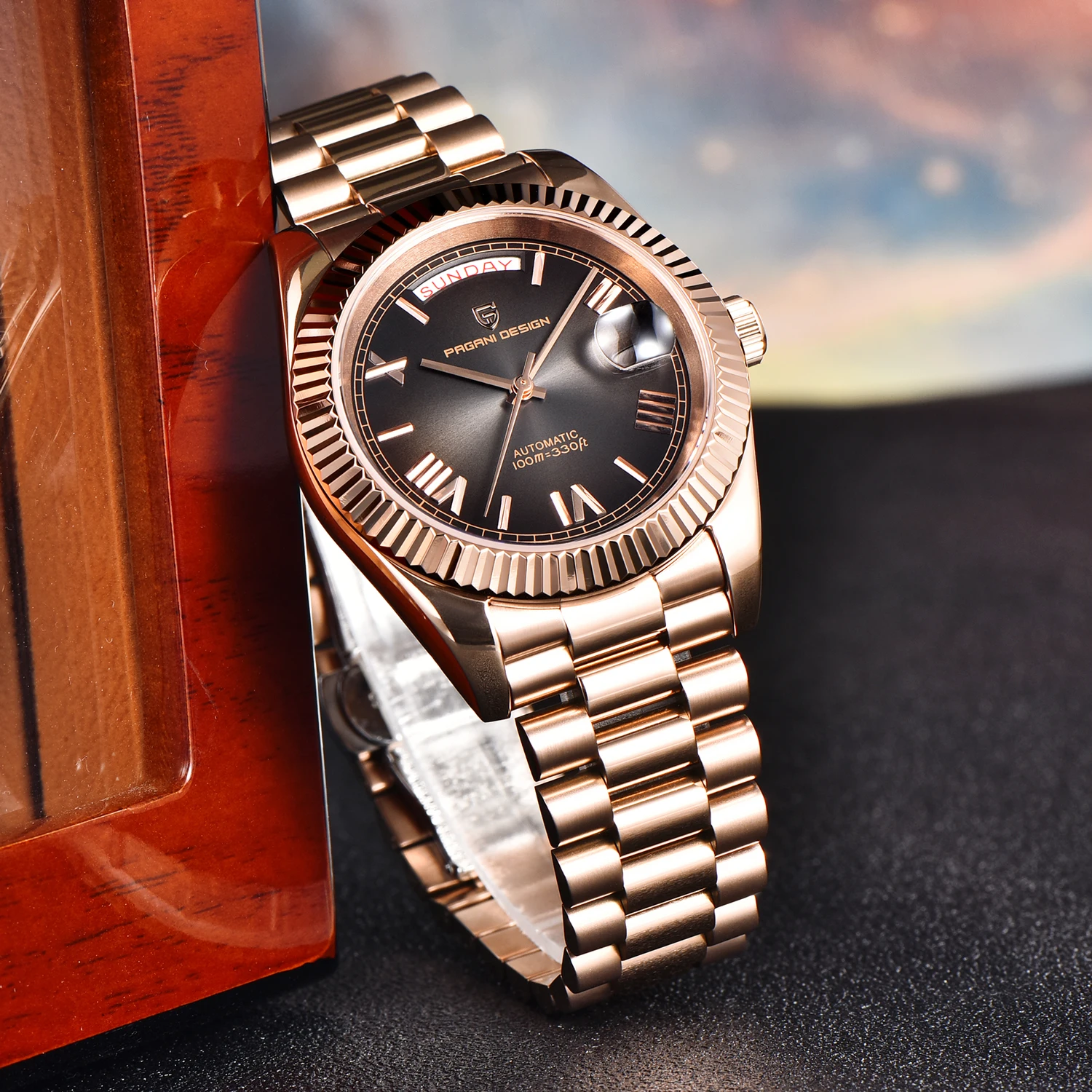
Case Studies: Exemplary Chronograph Craftsmanship
The Integrated Architecture Marvel
One of the most celebrated examples of chronograph craftsmanship features a fully integrated architecture that took nearly ten years to develop. This movement showcases exceptional space efficiency with a total height under 7mm despite incorporating a column wheel and vertical clutch system. What distinguishes this caliber is the harmonious arrangement of its chronograph components, visible through a sapphire caseback.
The finishing sets new standards with hand-beveled internal angles on nearly every bridge, including a signature Y-shaped chronograph bridge that contains six internal angles—each representing hours of meticulous handwork. The column wheel features polished pillars and a domed cap with circular graining, while all steel chronograph levers receive black polishing that creates dramatic light play.
The Traditional Craftsmanship Champion
Another exemplary chronograph takes a different approach, embracing traditional construction methods while incorporating subtle modern improvements. This manually-wound caliber features a lateral clutch and column wheel system reminiscent of vintage pocket chronographs, with components arranged for maximum visual impact.
What distinguishes this movement is the exceptional depth of its finishing. Every component—even those hidden from view—receives elaborate decoration. The mainplate features perlage so precise that each circle perfectly overlaps its neighbor by exactly one-third. The chronograph bridges display wide Geneva stripes with exceptionally sharp transitions, while steel components receive extensive black polishing. Even the column wheel slots are hand-polished to remove any manufacturing marks.
These examples represent distinct approaches to chronograph craftsmanship, yet both demonstrate the extraordinary attention to detail that defines excellence in this domain. The heritage and evolution of dive watches follows similar patterns, with different manufacturers developing distinct approaches to solving common challenges.
Evaluating Craftsmanship: What Distinguishes Exceptional Quality
Recognizing superior chronograph craftsmanship requires attention to specific details that reveal the care invested in a timepiece. When evaluating a chronograph movement, consider these key indicators:
Finishing Consistency – Look for uniform application of decorative techniques across all visible components. Anglage should maintain consistent width and angle, while Geneva stripes should show perfect parallel alignment without wavering.
Interior Angles – The presence of sharp internal angles on bridges and plates provides definitive evidence of hand-finishing, as machines cannot produce these features. Quality examples will show crisp, well-defined interior corners.
Component Interaction – Observe how levers and springs interact with the column wheel or cam system. In superior examples, these components will move with precise alignment, without excessive play or friction.
Screw Quality – Even humble screws reveal much about overall craftsmanship. Look for polished screw heads with chamfered slots and edges. In the finest examples, screw slots will align perfectly with each other or with the movement’s radial design.
Clutch Implementation – Examine how the chronograph seconds hand behaves when activated. Superior clutch design produces smooth starting with minimal or no initial jump.
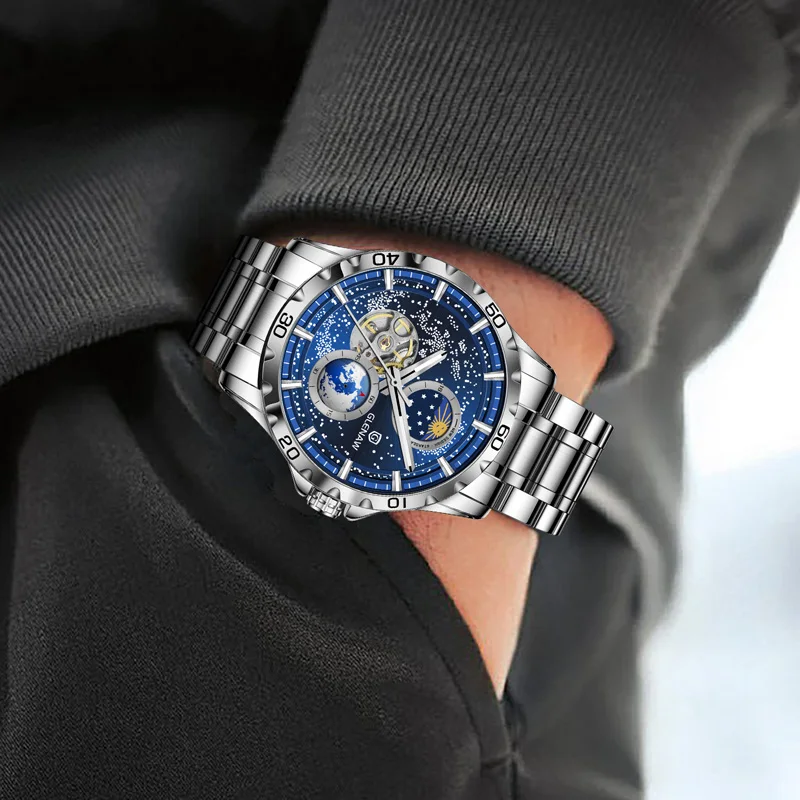
The relationship between price and craftsmanship isn’t always linear. While entry-level luxury chronographs typically feature machine finishing and simpler mechanisms, exceptional value can be found in the mid-range where manufacturers often combine machine efficiency with meaningful hand-finishing. The highest tier represents significant investment in hundreds of hours of handwork, with prices reflecting this intensive labor.
Classic Automatic Dress Watches, Day Date Automatic Watches, Perpetual Calendar Automatic Watches
Price range: $540.60 through $574.60 Select options This product has multiple variants. The options may be chosen on the product pageAutomatic Chronograph Watches, Chronograph Pilot Watches
Price range: $233.36 through $237.58 Select options This product has multiple variants. The options may be chosen on the product pageClassic Automatic Dress Watches, GMT Automatic Watches, GMT Pilot Watches
Price range: $1,240.86 through $1,463.33 Select options This product has multiple variants. The options may be chosen on the product pageAutomatic Chronograph Watches, Classic Style Dive Watches
$3,053.06 Select options This product has multiple variants. The options may be chosen on the product pageAutomatic Skeleton Watches, Open Heart Automatic Watches
$98.36 Select options This product has multiple variants. The options may be chosen on the product pageBronze Automatic Watches, Military Inspired Automatic Watches, Professional Spec Dive Watches
Price range: $1,442.21 through $1,442.82 Select options This product has multiple variants. The options may be chosen on the product page
Innovations in Modern Chronograph Craftsmanship
Contemporary chronograph development balances tradition with innovation, incorporating new materials and techniques while respecting established craftsmanship principles. This evolution parallels the influence of marine exploration on dive watches, with practical needs driving technical advancement.
Silicon has revolutionized certain chronograph components, particularly escapements and hairsprings. This material offers superior performance through its antimagnetic properties, low friction, and ability to be manufactured with extraordinary precision. Modern silicon chronograph components can achieve geometries impossible with traditional materials, improving energy efficiency and rate stability.
Advanced ceramics now appear in high-wear applications like column wheels and push pieces. These materials offer exceptional hardness and low friction, reducing wear while eliminating the need for lubrication in certain components. Some manufacturers have developed ceramic composite chronograph pushers that combine traditional aesthetics with modern durability.
Computer-aided design has transformed chronograph development, allowing engineers to simulate mechanical interactions and optimize component geometries before creating physical prototypes. However, the finest manufacturers use these digital tools to enhance rather than replace traditional skills—computer modeling might define the basic form of a chronograph bridge, but human hands still apply the finishing touches that elevate it to art.
Manufacturing techniques have similarly evolved, with wire erosion and CNC machining achieving precision that would astonish traditional watchmakers. Yet these technologies serve primarily to create components that still receive hand-finishing. This hybrid approach delivers the best of both worlds—consistent base components enhanced by the human touch that defines true luxury.
The development of open heart vs skeleton designs reflects similar balances between tradition and innovation, with new manufacturing capabilities enabling fresh interpretations of established aesthetic concepts.
Collecting Insights: Appreciating Chronograph Craftsmanship
Developing an appreciation for chronograph craftsmanship adds a rewarding dimension to watch collecting. Beyond simply admiring a chronograph’s dial aesthetics or brand prestige, understanding the craftsmanship within allows collectors to recognize and value the extraordinary work invested in these mechanical marvels.
Begin by investing in a quality loupe—a 10x magnification provides the ideal balance between detail visibility and ease of use. This simple tool reveals a whole new world of finishing details invisible to the naked eye. Practice looking at movement details under consistent lighting, slowly training your eye to recognize different finishing techniques and quality levels.
Visit watch boutiques and request to examine display models with exhibition casebacks. Most enthusiastic sales staff will gladly allow close inspection of movements and can often explain specific details about their brand’s finishing approach. Watch fairs and collector meetups provide additional opportunities to view exceptional examples and learn from experienced collectors.
Consider how transparency has transformed chronograph appreciation. The proliferation of sapphire casebacks has shifted manufacturers’ focus to movement aesthetics, with many now designing chronograph calibers specifically to be showcased. This visibility has generally elevated industry standards, as movements once hidden behind solid casebacks now receive decorative finishing worthy of display.
The evolution of dive watches follows a similar trajectory, with technical innovations gradually becoming aesthetic signatures that collectors learn to recognize and appreciate.
The Future of Chronograph Craftsmanship
As we look forward, chronograph craftsmanship stands at a fascinating crossroads between tradition and innovation. The fundamental principles established over centuries remain relevant, but their expression continues to evolve through new materials, techniques, and aesthetic approaches.
Traditional hand-finishing will likely remain the gold standard for luxury chronographs, though its application may become increasingly focused on the most visible components. We’re seeing a trend toward “strategic handcraft”—the thoughtful allocation of intensive hand-finishing to areas where it creates the most visual and functional impact, complemented by precision machine finishing elsewhere.
Training represents perhaps the greatest challenge to continued chronograph craftsmanship excellence. The skills required take years to develop, yet must compete with digital career alternatives that offer quicker returns. Forward-thinking manufacturers have established watchmaking academies and apprenticeship programs to preserve these techniques, ensuring that traditional craftsmanship knowledge transfers to new generations.
Consumer education continues to shape manufacturing priorities. As collectors become more knowledgeable about movement finishing and technical execution, manufacturers respond with greater transparency and attention to detail. This virtuous cycle elevates standards across the industry, from entry-level luxury chronographs to haute horlogerie masterpieces.
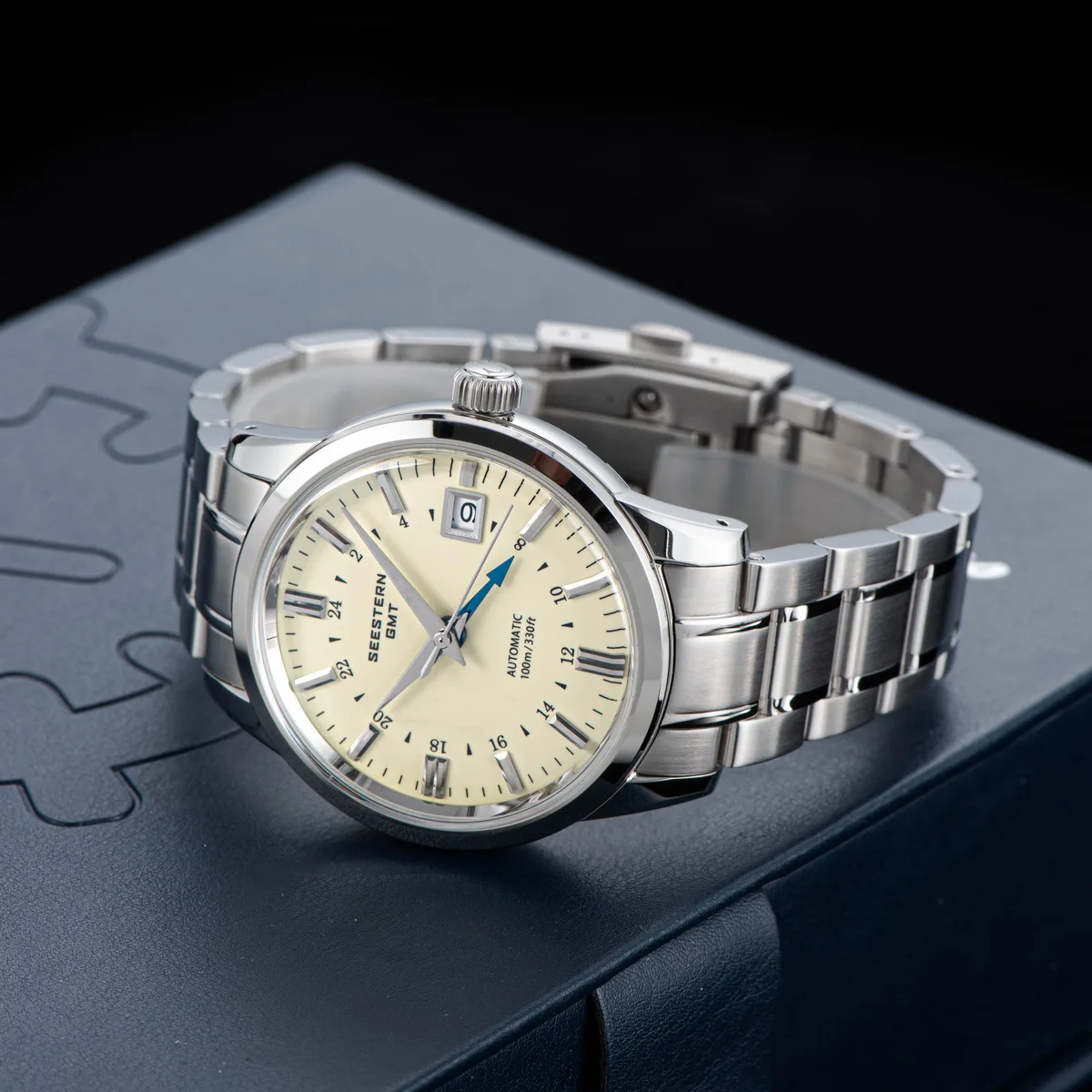
Independent watchmakers will likely continue pushing chronograph craftsmanship boundaries, introducing innovative mechanisms and finishing techniques unfettered by corporate constraints. These creative forces serve as important industry catalysts, challenging established manufacturers to continuously improve their offerings.
Glossary: Essential Terms in Chronograph Craftsmanship
Anglage: The creation of polished beveled edges on movement components, typically at a 45-degree angle. A hallmark of fine finishing.
Cam-actuated: A chronograph system using shaped cams rather than a column wheel to control functions.
Column Wheel: A toothlike component resembling a castle turret that controls chronograph functions in high-end movements.
Côtes de Genève: Parallel decorative lines creating a wave-like pattern across movement surfaces, also known as Geneva stripes.
Flyback: A chronograph function allowing reset and restart with a single pusher action without stopping first.
Lateral Clutch: A chronograph coupling system where a wheel slides horizontally to engage the chronograph mechanism.
Monopusher: A chronograph controlled entirely through a single pusher, typically integrated into the crown.
Perlage: Overlapping circular patterns applied to movement surfaces, resembling pearls or fish scales.
Poli Noir: Black polishing—a technique creating a surface so perfectly flat it appears black from certain angles.
Rattrapante: A split-seconds chronograph with two superimposed seconds hands that can measure intermediate times.
Rocking Bar: A component in certain chronograph calibers that rocks between positions to control functions.
Train: The series of gears transmitting power through a movement.
Vertical Clutch: A chronograph coupling system using friction plates pressed together vertically, eliminating seconds hand jump.

